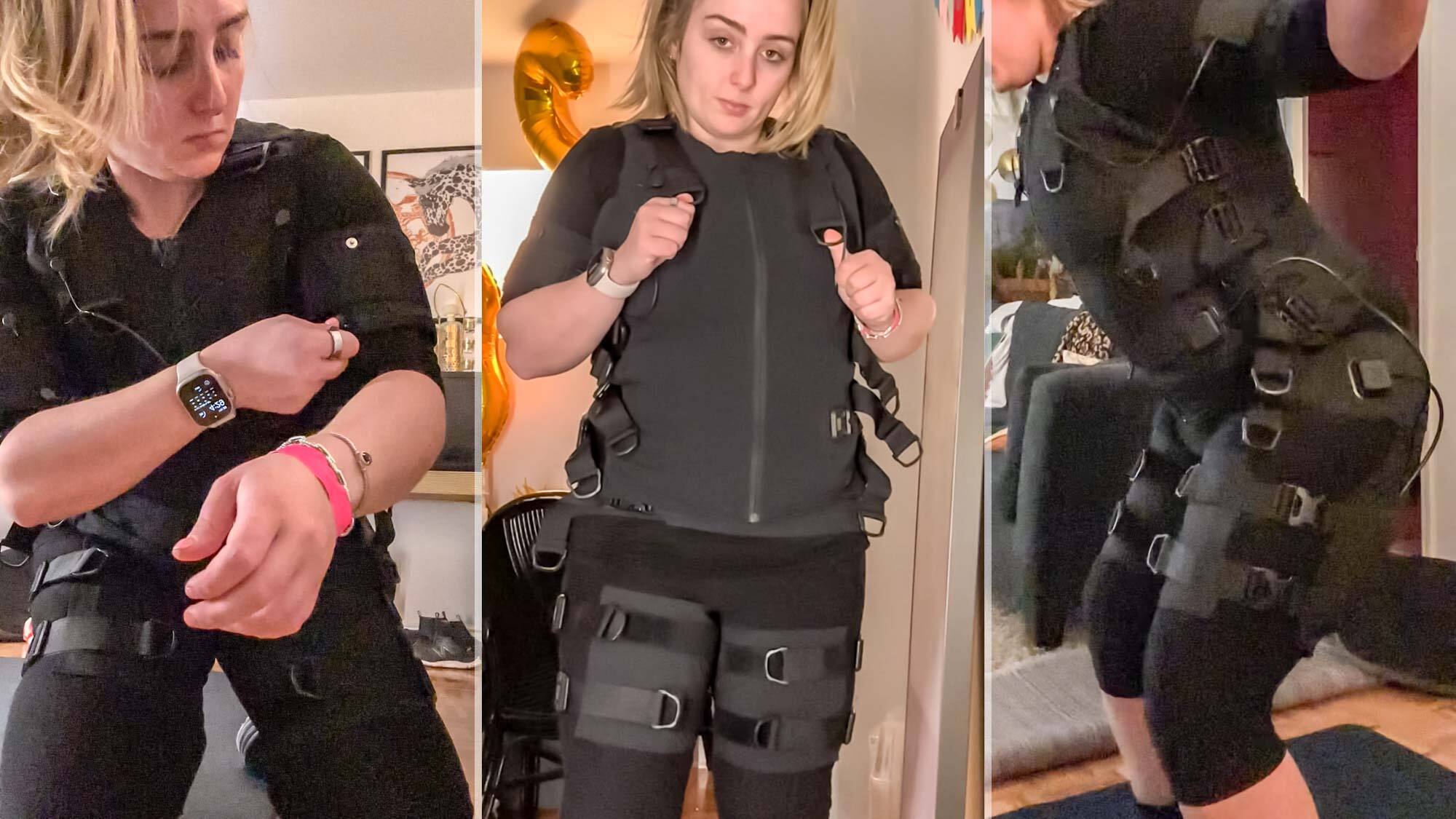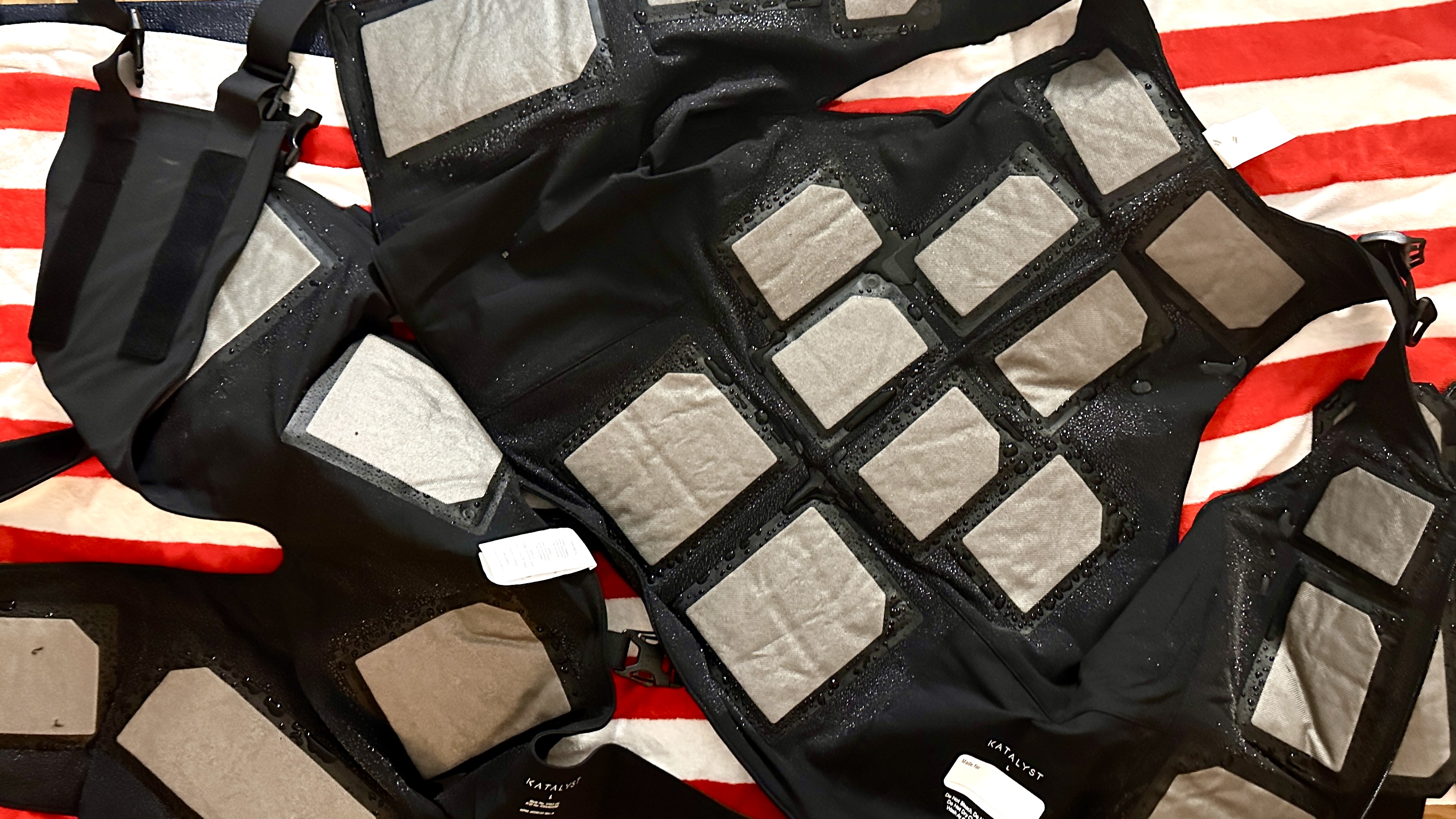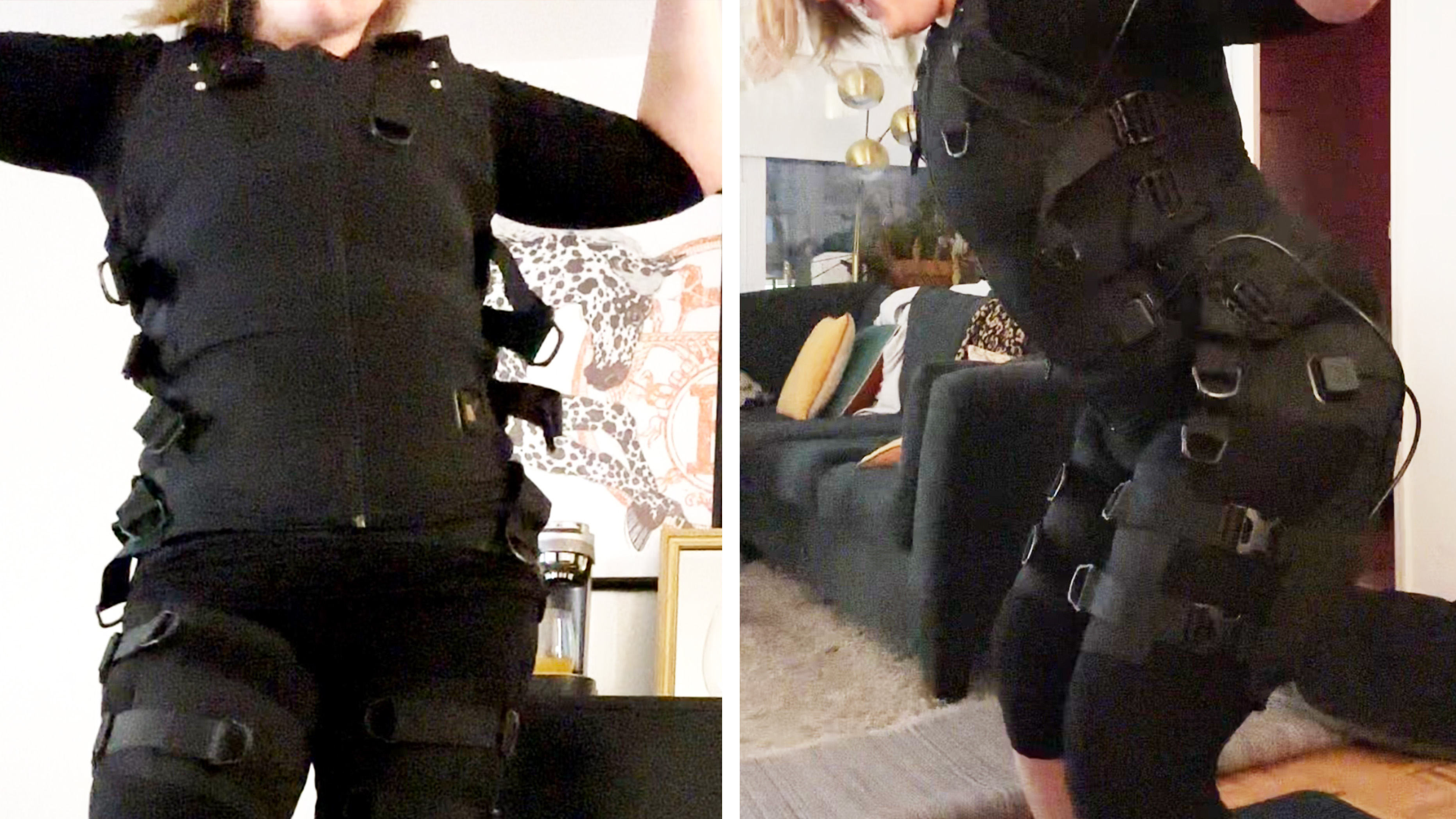I exercised with this $2,400 EMS suit for a month — and the results shocked me
Is this full-body workout worth the buzz?

Sometimes, getting motivated to exercise requires a kick in the butt — but a rhythmic shock to all my major muscle groups might also do the trick.
Katalyst is an Electrical Muscle Stimulation-based suit and workout system that's as “connected fitness” as it gets. As someone who’s always game to try a new way to exercise (especially one that’s endorsed by celebrities like Bradley Cooper and Cindy Crawford) I was curious about whether EMS could earn a spot in my workout routine.
Priced at $2,385, the Katalyst training system is a sophisticated piece of home gym equipment with full-body resistance workouts that take just 20 minutes. The equivalent of a 2-hour workout can allegedly be achieved in such a short amount of time thanks to the Katalyst suit’s tiny electrodes targeting all the major muscle groups at once. The getup is cyborg-like, with conductive pads and connective wires and a battery pack.
Paired with an iPad app that controls the suit through a collection of in-house classes, Katalyst offers an all-in-one solution that’s certainly buzz-worthy. Plus it’s the only FDA-cleared, at-home consumer EMS training systems on the market. But is Katalyst worth the high price, and do I think it’s a replacement for my workout mirror or exercise bike after using it for a month?
Getting set up is a workout in itself

Unlike stepping onto a treadmill or clipping into an exercise bike, getting ready to workout with Katalyst felt far from second-nature. In fact, I needed to video conference with a Katalyst representative to be walked through setup for my first training session.
You can’t use Katalyst in your favorite sports bra and gym leggings. The system comes with two sets of base layers, or sheer pairs or long-sleeve tops and capri tights. They don’t feel very supportive, and certainly I wouldn’t strut out on a Hot Girl Walk in them, but the thin material is conducive to good contact between the Katalyst suit and muscles.
The next step probably surprised me most. My suit came with a large spray bottle, which the Katalyst representative instructed me to fill with water and use to soak down the inner connective pads on the entire suit. Like the base layer, moisture is needed for the EMS technology to work.
Sign up to get the BEST of Tom's Guide direct to your inbox.
Get instant access to breaking news, the hottest reviews, great deals and helpful tips.
Finally, it was time to strap into the now-damp suit. The actual suit features several parts: a large zip-up vest, clip-on shorts and two arm wraps. The pieces all clip together or connect via cords. A combo battery-Bluetooth pack (called the Impulse Pack) that tucks into a pocket near the right hamstring features two cables that run directly to the shorts and vest, while the armbands connect to the vest via small extension cords that I had to be extremely careful not to misplace.
During the initial week of EMS training, it took me at least 20 minutes to prepare to exercise between making sure I situated all the parts properly, mopping up the leftover water on my floor, and deciding which class I wanted to take. Over time, I became more efficient, but it still always felt like getting ready was a workout in itself.
Truly shocking workouts

While it’s true that getting into the suit is half the challenge, the fun starts upon launching one of Katalyst’s pre-recorded classes. When I started a class from the app on my iPad, it checked that my suit had good contact with my muscles. If it didn’t, the app would show me which parts needed to be adjusted and run another check before moving on to the class.
Katalyst shocked all my muscles at once — not just a small targeted area.
Once a class is underway, there’s no guesswork needed. Not only do the trainers demonstrate the entire workout, but they talk through the technology and how to breath through bouts of stimulation.
The stimulation was actually a familiar sensation for me. My days as an athlete landed me in multiple knee surgeries, and electrical stimulation was prescribed as part of physical therapy for my atrophying quad muscles. Except Katalyst shocked all my muscles at once — not just a small targeted area.
That said, the stimulation only runs for four seconds at a time, during which you’re supposed to move through a movement. Common strength exercises included biceps curls, standing crunches and squats. In yoga classes, the movements included twists, Warrior II, and side bends. Katalyst has a number of HIIT, Boxing and Recovery classes with popular movements, too.
As the class goes on, the coach increases the intensity of the stimulation. This adds resistance, making it more difficult for your body to go through the motions. It emulates the effect of adding more weight. Sometimes, when I was up for a tougher challenge, I would bypass the automatic adjustments and make manual resistance increases, which are available muscle-by-muscle on the class interface. Other times, it felt nice to let the coach take the reins. I definitely like how there’s an option for both.
Sore muscles guaranteed
The soreness I suffered after my first Katalyst class was unlike anything I had ever experienced. It literally felt like I had been punched all over my body. I was pretty surprised, since I workout regularly and often do the types of movements featured in the Katalyst class I took.
Since it’s recommended to do EMS training twice per week, I had a couple of days to recover. By the time I was ready for my next class, I had recovered with some slow flow yoga and walks. After my second workout, I didn’t feel nearly as sore, which gave me more confidence to continue on with the training.
The soreness I suffered after my first Katalyst class was unlike anything I had ever experienced. It literally felt like I had been punched all over my body.
Sticking to two classes per week, for four weeks, I used Katalyst eight times total. Paired with my other activities like Lululemon Studio boxing classes, walking challenges with Strava and hot yoga at my local studio, I had a highly active month. (I even closed all my Apple Watch rings for a week at one point.) I think I saw some better definition in my arms specifically, but it was less about how I looked and more about how I felt.
I felt strong and stable in a way that I haven't since I quit taking lifting seriously three years ago. Despite trying several at-home workout options, I haven’t found one that gives me the gym-quality, weight-training results quite like Katalyst. Tonal comes closest, but the machine is quite substantial and can’t be taken on the go or tucked away in a closet.
Is Katalyst worth the buzz?
The price for Katlyst is quite high (and it doesn’t include an iPad) but at least you won’t be paying a monthly fee as is standard for nearly all the major workout platforms.
And while it’s hard to look past the onboarding price tag, there’s a lot to like about Katalyst. In my experience, it delivered results I could feel in just 20 minutes of my day. The collection of classes is diverse enough that I didn’t need to take the same class twice, and I found the coaches to have the same charisma you’ll find on mainstream workout apps.
Still, my problem with Katalyst is the effort of getting ready to workout. Switching out of the yoga clothes I wear to work from home into the base layer, making a mess of water on my floor and securing every piece of the getup to my body is a hassle. In that time, I could’ve already been halfway through a Time to Run workout or a pilates class. I also forgot to recharge the essential Impulse Pack once, but didn’t realize until I was already fully suited up. I had to de-suit and do the whole thing over again an hour later.
As someone who enjoys doing all kinds of workouts, it’s hard to think I’ll frequently opt for Katalyst when I have access to other options that are simpler to initiate. But I think if you’re someone who would use Katalyst as your main workout, twice a week, you might find the results you’re looking for in a short amount of time.
Either way, consider consulting with your doctor about whether EMS is an exercise style that could work for you before buying.
More from Tom's Guide
Kate Kozuch is the managing editor of social and video at Tom’s Guide. She writes about smartwatches, TVs, audio devices, and some cooking appliances, too. Kate appears on Fox News to talk tech trends and runs the Tom's Guide TikTok account, which you should be following if you don't already. When she’s not filming tech videos, you can find her taking up a new sport, mastering the NYT Crossword or channeling her inner celebrity chef.

